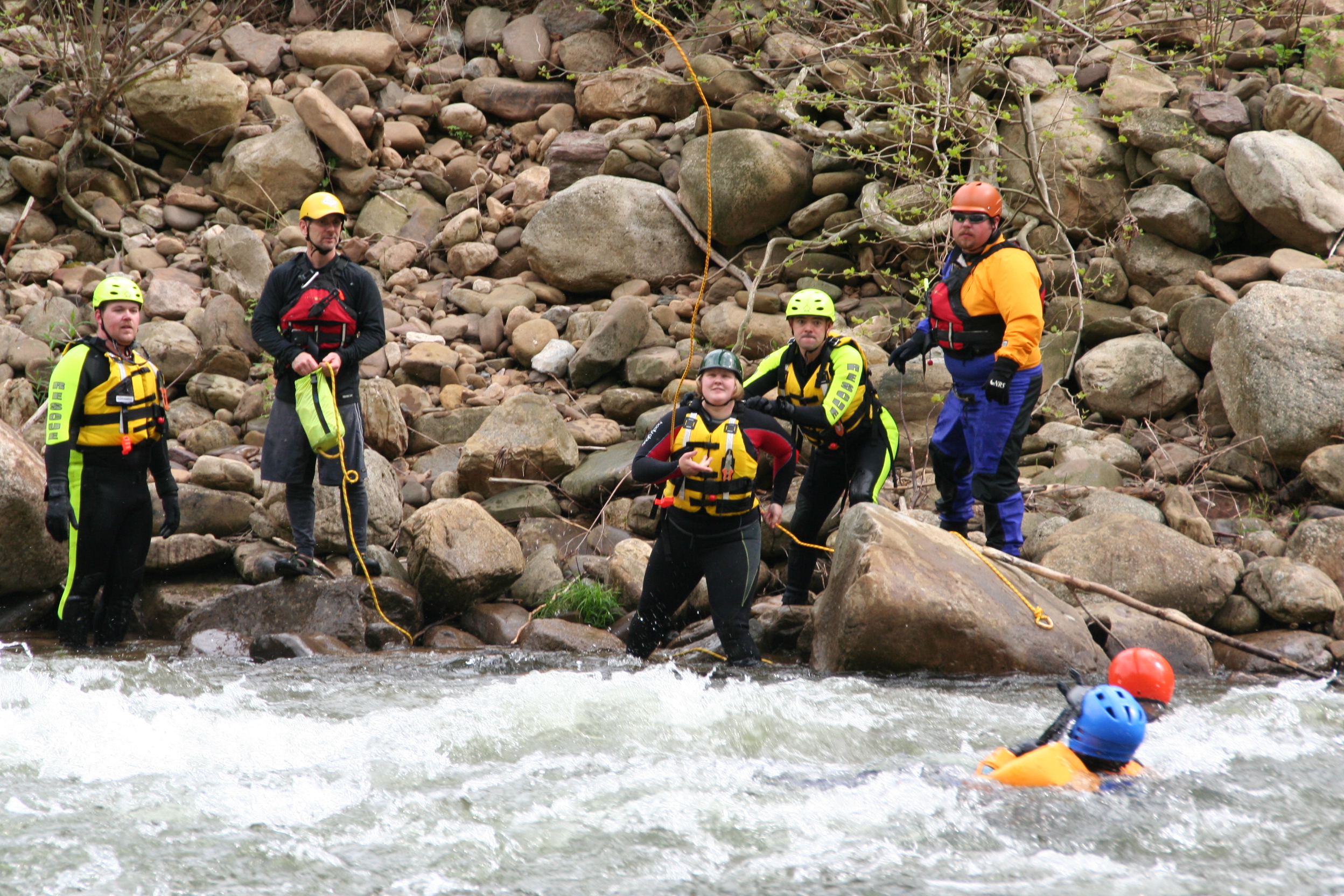Course itinerary & site logistics
ACA Level 2: Essentials of River Rescue and Safety Agenda
We will be using the ACA recommended SWR class agenda for this class. Few ACA instructors are able to cover all of the topics listed in one weekend. How much is covered depends a great deal on students experience and preparation. As a general rule, instructors tend to focus on topics that provide the most value to their class makeup. The ACA class agenda we are using is: ACA Level 2: Essentials of River Safety and Rescue
Site Logistics
We hold this class on both US Park Service Property and parklands controlled by Maryland whom has jurisdiction over the waterway. Parking is limited at Lock 5 so we highly recommend arriving by 8:30 AM so we can organize parking and leave spaces for other visitors and park service vehicles. Please use discretion when changing clothes as many park visitors pass by this area. Leave no trace is always a good rule to follow. Although Lock 5 has restroom facilities, they may be out of order the day of the class. We are very fortunate to have such a great place to run our training classes - please treat this area with respect so we are always welcome in the future.
Introduction, Expectations, & Logistics
 This website is a compilation of a number of articles and various web resources that cover all topics listed in the ACA (American Canoe Association) Level 2 Essentials of River Safety and Rescue suggested curriculum. The ACA SWR class is essential training for all intermediate and above kayakers. The training provided in the SWR class not only teaches you techniques for potentially saving your boating buddies, it also provides valuable guidance on how to avoid incidents in the first place.
This website is a compilation of a number of articles and various web resources that cover all topics listed in the ACA (American Canoe Association) Level 2 Essentials of River Safety and Rescue suggested curriculum. The ACA SWR class is essential training for all intermediate and above kayakers. The training provided in the SWR class not only teaches you techniques for potentially saving your boating buddies, it also provides valuable guidance on how to avoid incidents in the first place.
When I teach this class, I feel it is very beneficial to have students review this material at their leisure from home. The SWR discipline is very extensive and quite challenging to cover in just one weekend. I also recommend students purchase a copy of the Whitewater Rescue Manual (Walbridge & Sundmacher) and/or River Rescue (Slim Ray) - both are excellent resources you will enjoy for many years to come.
Real incidents are very stressful events. This is no time for learning on the job as not only victims lives are on the line, so are bystanders and rescue persons. We have learned a deal over the years on what works and what doesn't. Les Bechdel and Slim Ray were early pioneers for these skills and have trained numerous SWR professionals. Charlie Walbridge maintains the AW Safety Database and is a leader the ACA SWR Training program. The Whitewater Self Defense DVD is an excellent learning tool as well.
We start this class by getting to know the participants, their paddling backgrounds, and perhaps specifics goals they are interested in learning about from this class. Safety in all ACA classes is absolutely paramount. A key rule in every ACA class is the concept of "Challenge By Choice". Put quite simply, if a particular exercise is well beyond your comfort level - skip it.
Level 2: Essentials of River Safety and Rescue
Course Overview
The River Safety and Rescue workshop teaches recognition and avoidance of common river hazards, execution of self-rescue techniques, and simple rescues of paddlers in distress. Emphasis is placed both on personal safety and on simple, commonly used skills. Fundamental techniques for dealing with hazards that carry greater risks for both victim and rescuer, such as entrapments, and pins, also are taught. This course is aimed primarily at new boaters, or boaters who do not anticipate paddling in whitewater.
PFD designed for whitewater use, whitewater helmet, protective clothing suitable for extended swimming in cold water, protective footwear, boat, paddle, whistle and throw rope.
NOTE: The CCA brings a gear bag with lots of extra prusik cords and climbing webbing for knot tying practice.
This is a one day class to be taught on rivers up to class I rapids.
ACA Official Curriculum: Level 2: Essentials of River Safety and Rescue
| Rescue Philosophy | |
| Medical Issues | |
| Equipment | Hazards and Hydrology |
| Swimming | Pins |
| Wading | Entrapment |
| Boat-based rescue | |
| Scenarios | |
|
|
|
|
|
|
|
|
|
|
|
|
|
|
|
|
|
|
